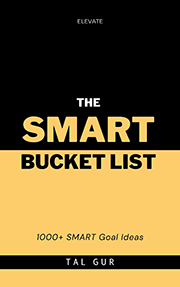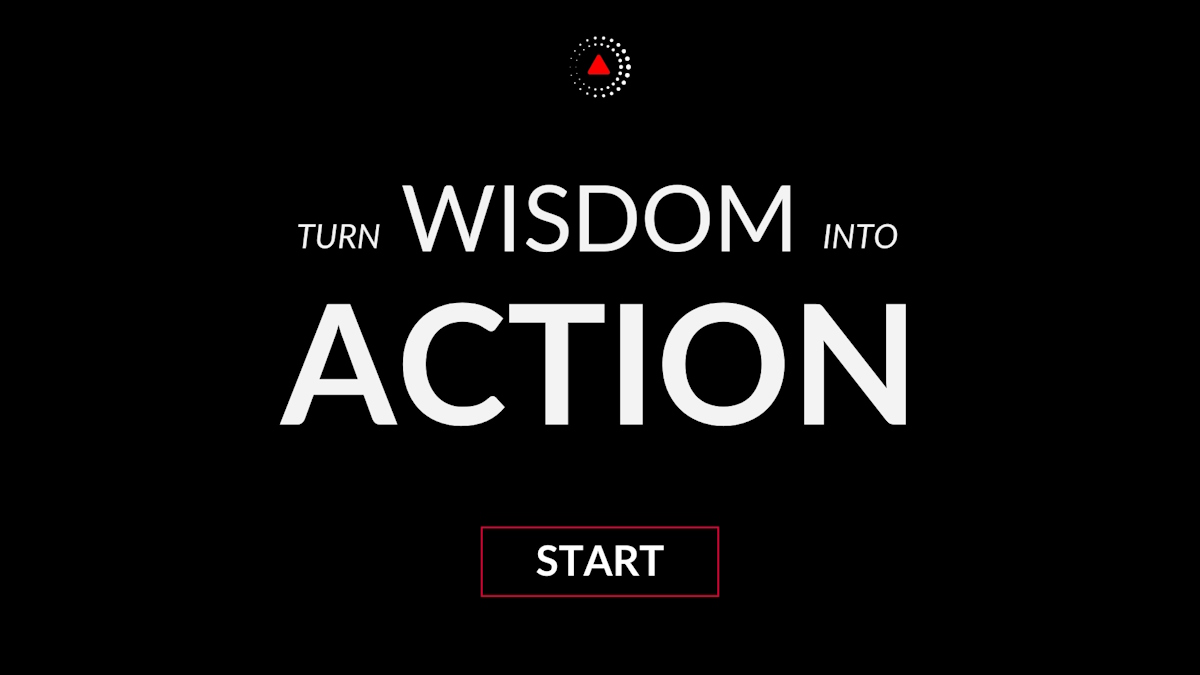50 Top Quotes From Contagious
In a world brimming with information overload and fierce competition for attention, Jonah Berger masterfully unravels the secret behind why some ideas, products, or behaviors catch on like wildfire while others languish in obscurity. Through compelling storytelling and a well-researched analysis of social dynamics, "Contagious" lays out the six key principles that drive the contagiousness of ideas.
Berger effortlessly blends academic rigor with practical insights, offering marketers, entrepreneurs, and everyday individuals a blueprint for crafting messages that spread like an infectious virus. By exploring factors such as social currency, triggers, and emotional resonance, the book serves as a thought-provoking guide to understanding how to create sticky and shareable content in a world where virality has become the holy grail of success. Whether you seek to propel your business forward or simply make your ideas more captivating, "Contagious" equips readers with the tools to harness the power of contagiousness and spark a ripple effect in the hearts and minds of others. (Contagious Summary).
Contagious Quotes
"Making things more observable makes them easier to imitate, which makes them more likely to become popular.”
"Virality isn’t born, it’s made.”
"People don't think in terms of information. They think in terms of narratives. But while people focus on the story itself, information comes along for the ride.” (Meaning)
"People don't need to be paid to be motivated.”
"Marketing is about spreading the love.”
"Word of mouth is the primary factor behind 20 percent to 50 percent of all purchasing decisions.”
"When we care, we share.”
"Why does it matter if particular thoughts or ideas are top of mind? Because accessible thoughts and ideas lead to action.”
"Even in cases where most people are doing the right thing, talking about the minority who are doing the wrong thing can encourage people to give in to temptation.”
"We need to design products and ideas that are frequently triggered by the environment and create new triggers by linking our products and ideas to prevalent cues in that environment. Top of mind leads to tip of tongue.”
"Most beautiful emotion we can experience is the mysterious. It is the power of all true art and science. He to whom this emotion is a stranger, who can no longer pause to wonder and stand rapt in awe, is as good as dead.”
"How does it make people look to talk about a product or idea? Most people would rather look smart than dumb, rich than poor, and cool than geeky. Just like the clothes we wear and the cars we drive, what we talk about influences how others see us. It’s social currency. Knowing about cool things—like a blender that can tear through an iPhone—makes people seem sharp and in the know. So to get people talking we need to craft messages that help them achieve these desired impressions. We need to find our inner remarkability and make people feel like insiders. We need to leverage game mechanics to give people ways to achieve and provide visible symbols of status that they can show to others.”
"It has been said that when people are free to do as they please, they usually imitate one another. We look to others for information about what is right or good to do in a given situation, and this social proof shapes everything from the products we buy to the candidates we vote for. The phrase ‘Monkey see, monkey do’ captures more than just our tendency to follow others. If people can’t see what others are doing, they can’t imitate them. So to get our products and ideas to become popular we need to make them more publicly observable.”
"Research by the Keller Fay Group finds that only 7 percent of word of mouth happens online.”
"Contagious content is like that—so inherently viral that it spreads regardless of who is doing the talking.”
"If something is built to show, it’s built to grow.”
"But the key word here is “seeing.” If it’s hard to see what others are doing, it’s hard to imitate it. Making something more observable makes it easier to imitate. Thus a key factor in driving products to catch on is public visibility. If something is built to show, it’s built to grow.”
"Great game mechanics can even create achievement out of nothing. Airlines turned loyalty into a status symbol. Foursquare made it a mark of distinction to be a fixture at the corner bar. And by encouraging players to post their achievements on Facebook, online game makers have managed to convince people to proclaim loudly—even boast—that they spend hours playing computer games every day.”

"Word of mouth is more effective than traditional advertising for two key reasons. First, it’s more persuasive.”
"Harvard neuroscientists Jason Mitchell and Diana Tamir found that disclosing information about the self is intrinsically rewarding. In one study, Mitchell and Tamir hooked subjects up to brain scanners and asked them to share either their own opinions and attitudes (“I like snowboarding”) or the opinions and attitudes of another person (“He likes puppies”). They found that sharing personal opinions activated the same brain circuits that respond to rewards like food and money. So talking about what you did this weekend might feel just as good as taking a delicious bite of double chocolate cake.”
"So to get people talking, companies and organizations need to mint social currency. Give people a way to make themselves look good while promoting their products and ideas along the way. There are three ways to do that: (1) find inner remarkability; (2) leverage game mechanics; and (3) make people feel like insiders.”
"As it turns out, if something is supposed to be secret, people might well be more likely to talk about it. The reason? Social currency. People share things that make them look good to others.”
"Nobody talks about boring companies, boring products, or boring ads,” argues one prominent word-of-mouth advocate.”
"Word of mouth is more effective than traditional advertising for two key reasons. First, it’s more persuasive. Second, word of mouth is more targeted. It is naturally directed towards an interested audience. But want to know the best thing about word of mouth? It’s available to everyone. And it doesn’t require millions of dollars spent on advertising. It just requires getting people to talk.”
"Yet science articles, like Denise Grady’s piece about the cough, made the Most E-Mailed list more than politics, fashion, or business news. Why? It turns out that science articles frequently chronicle innovations and discoveries that evoke a particular emotion in readers. That emotion? Awe.”
"A five-star review on Amazon.com leads to approximately twenty more books sold than a one-star review.”
"Why do some products, ideas, and behaviors succeed when others fail?”
"If word-of-mouth pundits agree on anything, it’s that being interesting is essential if you want people to talk. Most buzz marketing books will tell you that. So will social media gurus. “Nobody talks about boring companies, boring products, or boring ads,” argues one prominent word-of-mouth advocate. Unfortunately, he’s wrong.”
"But although quality, price, and advertising contribute to products and ideas being successful, they don’t explain the whole story.”
"Behavioral residue is the physical traces or remnants that most actions or behaviors leave in their wake.”
"Advertising also plays a role. Consumers need to know about something before they can buy it. So”
"Triggers explain why. Even a bad review or negative word of mouth can increase sales if it informs or reminds people that the product or idea exists. That’s why a sixty-dollar Tuscan red wine saw sales rise by 5 percent after a prominent wine website described it as “redolent of stinky socks.” It’s also one reason why the Shake Weight, a vibrating dumbbell that was widely ridiculed by the media and consumers, went on to do $50 million in sales. Even negative attention can be useful if it makes products and ideas top of mind.”
"Physiological arousal or activation drives people to talk and share. We need to get people excited or make them laugh. We need to make them angry rather than sad.”
"Social Currency We share things that make us look good Triggers Top of mind, tip of tongue Emotion When we care, we share Public Built to show, built to grow Practical Value News you can use Stories Information travels under the guise of idle chatter”
"Seeing others do something makes people more likely to do it themselves. But the key word here is”
"Our desire to share helpful things is so powerful that it can make even false ideas succeed. Sometimes the drive to help takes a wrong turn.”
"If something is built to show, it's build to grow.”
"A word-of-mouth conversation by a new customer leads to an almost $200 increase in restaurant sales.”
"The mere fact that something isn't readily available can make people value it more and tell others to capitalize on the social currency of knowing about it or having it.”
"A simple way to figure out which discount frame seems larger is by using something called the Rule of 100. If the product’s price is less than $100, the Rule of 100 says that percentage discounts will seem larger. For a $30 T-shirt or a $15 entrée, even a $3 discount is still a relatively small number. But percentagewise (10 percent or 20 percent), that same discount looks much bigger.”
"Harnessing the power of word of mouth, online or offline, requires understand why people talk and why some things get talked about and shared more than others. The psychology of sharing. The science of social transmission.”
"Useful things are important. People don’t just value practical information, they share it. Offering practical value helps make things contagious.”
"So be careful the next time you step off the treadmill, barely avoid a car accident, or experience a turbulent plane ride. Because you’ve been aroused by these experiences, you may overshare information with others in the aftermath.”
"If the product’s price is less than $100, the Rule of 100 says that percentage discounts will seem larger. For a $30 T-shirt or a $15 entrée, even a $3 discount is still a relatively small number. But percentagewise (10 percent or 20 percent), that same discount looks much bigger.”
"Emphasize what’s remarkable about a product or idea and people will talk.”
"People share more than 16,000 words per day and every hour there are more than 100 million conversations about brands.”
"Putting something on sale can make it seem like a good deal. But if a product is always on sale people start to adjust their expectations.”
"Often we’re not even trying to exaggerate; we just can’t recall all the details of the story. Our memories aren’t perfect records of what happened. They’re more like dinosaur skeletons patched together by archeologists. We have the main chunks, but some of the pieces are missing, so we fill them in as best we can. We make an educated guess. But in the process, stories often become more extreme or entertaining, particularly when people tell them in front of a group. We don’t just guess randomly, we fill in numbers or information to make us look good rather than inept. The fish doubles in size. The baby didn’t wake just twice during the night—that wouldn’t be remarkable enough—she woke seven times and required skillful parenting each time to soothe her back to sleep.”
"Word of mouth, then, is a prime tool for making a good impression—as potent as that new car or Prada handbag. Think of”
"We all want to be liked. The desire for social approval is a fundamental human motivation.”
"A simple way to figure out which discount frame seems larger is by using something called the Rule of 100. If the product's price is less than $100, the Rule of 100 says that percentage discount will seem larger. For a $30 t-shirt of a $15 entree, even a $3 discount is a relatively small number. But percentagewise (10 percent or 20 percent), that same discount looks much bigger.”
"Making something more observable makes it easier to imitate. Thus a key factor in driving products to catch on is public visibility. If something is built to show, it’s built to grow.”
"Give people a way to make themselves look good while promoting their products and ideas along the way. There are three ways to do that: (1) find inner remarkability; (2) leverage game mechanics; and (3) make people feel like insiders. INNER”
"So we need to make our products and ideas more public. We need to design products and initiatives that advertise themselves and create behavioral residue that sticks around even after people have bought the product or espoused the idea.”
"Designing messages that make people anxious or disgusted (high arousal) rather than sad (low arousal) will boost transmission. Negative emotions, when used correctly, can be a powerful driver of discussion.”
"A significantly higher percentage of the people who voted in schools were in favor of increasing funding for schools. The fact that they were in a school when they voted triggered more school-friendly behavior.”
"The more others seem to be doing something, the more likely people are to think that thing is right or normal and what they should be doing as well.”
― Quotes from the book Contagious by Jonah Berger
Contagious Author
As a marketing professor, author, and expert in social influence, Jonah Berger unravels the mysteries behind why certain ideas, products, or behaviors become contagious while others fade into oblivion. In his influential book, "Contagious: Why Things Catch On," Berger explores the science behind virality and identifies six key principles that contribute to the spread of ideas. With captivating anecdotes and compelling research, he illustrates how social currency, triggers, emotion, public visibility, practical value, and storytelling play pivotal roles in creating contagious content. Berger's insights are not only valuable for marketers but also for anyone seeking to understand the psychology behind viral trends and word-of-mouth communication. His work fosters a deeper appreciation for the power of social influence and offers a roadmap for crafting messages that resonate and spread organically in an interconnected world.
Chief Editor
 Tal Gur is an author, founder, and impact-driven entrepreneur at heart. After trading his daily grind for a life of his own daring design, he spent a decade pursuing 100 major life goals around the globe. His journey and most recent book, The Art of Fully Living, has led him to found Elevate Society.
Tal Gur is an author, founder, and impact-driven entrepreneur at heart. After trading his daily grind for a life of his own daring design, he spent a decade pursuing 100 major life goals around the globe. His journey and most recent book, The Art of Fully Living, has led him to found Elevate Society.






















